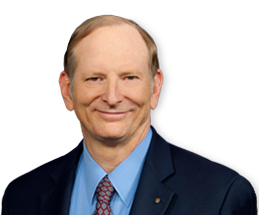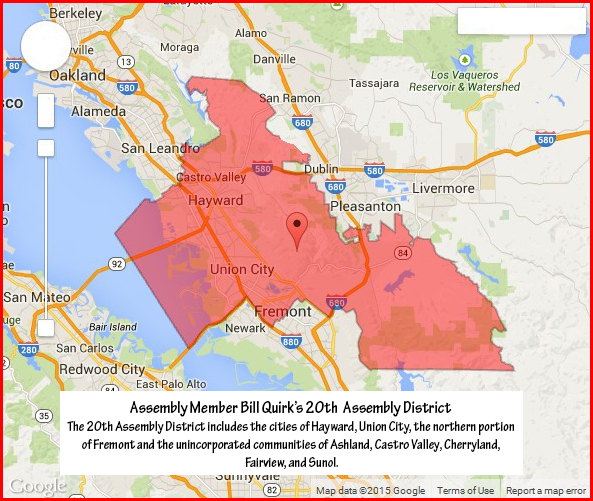As I predicted in yesterday’s post, AB 57 was, in fact, amended to start adding teeth. The first tooth is a innocuous…adding a representative of the League of California Cities and a representative of the California State Association of Counties to the board of the California Broadband Council.
But in the best hide-the-ball tradition, the real bite of this legislation, yet to be added (but surely it will), is related to this intent:
Existing law declares the intent of the Legislature that, consistent with this authorization, municipalities have the right to exercise reasonable control as to the time, place, and manner in which roads, highways, and waterways are accessed, but that for the control to be reasonable it must, at a minimum, be applied to all entities in an equivalent manner.
The “all entities” language just above suggests that a tooth about to pop through the gums will be a legislative requirement that telegraph or telephone corporations be treated like all entities in the right-of-way, which would include gas, water, sewer and most importantly electric utilities. If this is the goal of AB57, yet to be disclosed in this legislation, then it does not well serve Assembly Member Quirk’s constituents or property owners in California. The various utilities each have unique technical requirements for installation, operations, and the like for their equipment. It is illogical to equate any of the utilities to any of the other in the right of way. Trying to do so would only encourage the installation of cell sites in residential areas without suitable aesthetic controls simply by saying that 100 years ago PG&E installed a pole, overhead lines and facilities in the area, 100 years later a wireless carrier should be able to do the same thing. There is a substantial difference between a 32,000 volt electrical circuit in the right-of-way and a cell site in the right-of-way. Hopefully this legislation, as it continues to be amended, will not try to make them the same.
So far, the first amendment to add a representative of the League of California Cities and a representative of the California State Association of Counties to the board of the California Broadband Council is innocuous, but more teeth and sharper teeth are sure to come…soon.
Here is the bill as it stands today, March 28, 2015:
BILL NUMBER: AB 57 AMENDED
BILL TEXT
AMENDED IN ASSEMBLY MARCH 26, 2015
INTRODUCED BY Assembly Member Quirk
DECEMBER 2, 2014
An act to amend Section 8886 of the Government Code,
relating to communications.
LEGISLATIVE COUNSEL’S DIGEST
AB 57, as amended, Quirk. Broadband communications infrastructure.
The existing federal Telecommunications Act of 1996 preempts any state or local statute or regulation that may prohibit or have the effect of prohibiting the ability of any entity to provide any interstate or intrastate telecommunications service, but service. However, this provision does not prohibit a state from imposing imposing, on a competitively neutral basis, requirements necessary to preserve and advance universal service, protect the public safety and welfare, ensure the continued quality of telecommunications services, and safeguard the rights of consumers. The prohibition also contains a “safe harbor” that does not affect the authority of consumers, nor does it prevent a state or local
government to manage from managing the public rights-of-way or to require requiring fair and reasonable compensation from telecommunications providers, on a competitively neutral and nondiscriminatory basis, for use of public rights-of-way on a nondiscriminatory basis.
Under existing law, telegraph or telephone corporations may construct lines of telegraph or telephone lines along and upon any public road or highway, along or across any of the waters or lands within the state, and may erect related poles, posts, piers, abutments, and other necessary fixtures of their lines, but may not incommode the public use of the road or highway or interrupt the navigation of the waters. Existing law declares the intent of the Legislature that that, consistent with this authorization, municipalities have the right to exercise reasonable control as to the time, place, and manner in which roads, highways, and waterways are accessed, but that for the control to be reasonable it must, at a minimum, be applied to all entities in an equivalent manner.
Existing law establishes the California Broadband Council in state government for the purpose of promoting broadband deployment in unserved and underserved areas of the state and broadband adoption throughout the state, imposes specified duties on the council relating to that purpose, and specifies the membership of the council.
This bill would state the intent of the Legislature to enact legislation to promote the deployment of communications infrastructure by removing barriers to investment. The bill would add the President of the Board of Directors of the League of California Cities and the President of the Executive Committee of the California State Association of Counties, or their respective designees, to the membership of the council.
Vote: majority. Appropriation: no. Fiscal committee: no
yes. State-mandated local program: no.
THE PEOPLE OF THE STATE OF CALIFORNIA DO ENACT AS FOLLOWS:
SECTION 1. The Legislature finds and declares all of the following:
(a) California consumers and businesses have adopted new, Internet-based technologies and mobile connections at an unprecedented rate. Internet-based products and devices, including smartphones and tablets, are providing consumers everywhere with new choices to connect, to communicate, and to access information and entertainment.
(b) The deployment of faster, more robust, and advanced wireless and wireline broadband infrastructure is essential to ensuring there is sufficient capacity and coverage to support the increasing reliance of California residents on broadband services.
(c) State and local review of broadband infrastructure deployment serves important interests, but at the same time, California must take steps to ensure that requirements do not hinder investment. State and local permitting processes should be designed to eliminate unnecessary barriers and spur deployment of infrastructure. This includes streamlining permitting requirements to reduce delay and cost, and the creation of uniform processes.
(d) New and upgraded infrastructure delivers a vast array of consumer and community benefits, including important improvements to public safety, education, and healthcare. The power of mobile communications is a critical tool for first responders in emergency situations. According to the Federal Communications Commission, nearly 70 percent of 911 calls are made from mobile telephones, and that percentage is growing.
(e) As we continue the transition to a knowledge-based, technology-driven economy, California must invest in students and provide them with the proper tools and technologies to bolster academic achievement, starting with expanding access to high-speed broadband Internet and next-generation Internet Protocol-based networks.
(f) Facilitating broadband deployment additionally plays a key role in advancing telemedicine and mobile health applications, which can help Californians remotely monitor their health while reducing medical costs.
(g) Wireless broadband is also key to economic development and a driver for new business and jobs. Businesses increasingly depend on strong wireless broadband service to carry their employees through the work day. An estimated 94 percent of small businesses surveyed use smartphones to conduct business and mobile technologies are saving the country’s small businesses more than sixty-five billion dollars ($65,000,000,000) a year.
(h) Broadband infrastructure deployment creates jobs. A 2013 study conducted by the research firm Information Age Economics projects that wireless infrastructure investment will generate as much as one trillion two-hundred billion dollars ($1,200,000,000,000) in economic growth while creating over 1.2 million new jobs, nationally, over the next five years.
(i) It is the intent of the Legislature to enact legislation to promote the deployment of communications infrastructure by removing barriers to investment. Removing investment barriers is critical to meeting the surging demand by California residents for advanced wireless and wireline broadband technologies and services, supporting and enhancing critical public safety needs, and bridging the digital divide by increasing access for more Californians to improved education, health care, and economic development opportunities.
SEC. 2. Section 8886 of the Government
Code is amended to read:
8886. (a) The membership of the California Broadband Council shall include all of the following:
(1) The Director of Technology, or his or her designee.
(2) The President of the Public Utilities Commission, or his or her designee.
(3) The Director of Emergency Services, or his or her designee.
(4) The Superintendent of Public Instruction, or his or her designee.
(5) The Director of General Services, or his or her designee.
(6) The Secretary of Transportation, or his or her designee.
(7) The President of the California Emerging Technology Fund, or his or her designee.
(8) A member of the Senate, appointed by the Senate Committee on Rules.
(9) A member of the Assembly, appointed by the Speaker of the Assembly.
(10) The President of the Board of Directors of the League of California Cities, or his or her designee.
(11) The President of the Executive Committee of the California State Association of Counties, or his or her designee.
(b) Members of the Legislature appointed to the council shall
participate in the activities of the council to the extent that their
participation is not incompatible with their positions as Members of
the Legislature.
If you’re wondering about Government Code Section 8886, here’s what it says as of today:
8886. (a) The membership of the California Broadband Council shall
include all of the following:
(1) The Director of Technology, or his or her designee.
(2) The President of the Public Utilities Commission, or his or
her designee.
(3) The Director of Emergency Services, or his or her designee.
(4) The Superintendent of Public Instruction, or his or her
designee.
(5) The Director of General Services, or his or her designee.
(6) The Secretary of Transportation, or his or her designee.
(7) The President of the California Emerging Technology Fund, or
his or her designee.
(8) A member of the Senate, appointed by the Senate Committee on
Rules.
(9) A member of the Assembly, appointed by the Speaker of the
Assembly.
(b) Members of the Legislature appointed to the council shall
participate in the activities of the council to the extent that their
participation is not incompatible with their positions as Members of
the Legislature.






